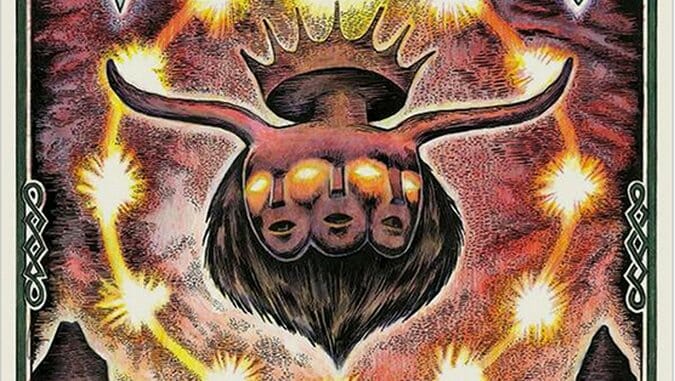Twelve Gems by Lane Milburn

Writer & Artist: Lane Milburn
Publisher: Fantagraphics
Release Date: July 15, 2014
Although Fantagraphics has a tendency to publish psychedelia-influenced comics (Jim Woodring, Wallace Wood’s witzend reissues, Victor Moscoso, Simon Hanselmann’s upcoming Megahex), the imprint’s choice to release Lane Milburn’s Twelve Gems still feels unusual. Milburn’s black-and-white space opera never quite telegraphs whether it’s a joke or not, but it doesn’t read like one. Instead, it more closely resembles outsider art, disinterested in anything outside of its own agenda, utterly disconnected from the mainstream.
Is Milburn’s heroine, Venus — with her zeppelin-esque breasts, Amazonian stature and skimpy outfits — commentary on the genre’s requirements? Is she a tribute to it? Or is she a less self-conscious creation? The same goes for Furz, a grouchy pig-like bounty hunter, and Dogstar, an alien canine equipped with solar wings — the two other members of the central heroic trio, both of whom are equally weird. Just like filmed adaptations of sci-fi work, comics in this genus can fail because they’re forced to visually portray every plot element, as opposed to leaving some aspects up to the imagination.
The art doesn’t balance the essential ridiculousness of the characters, the plot and the way the two work together (unless Milburn’s point is to be ridiculous). The mechanics of the story, which involves our trio flitting around the universe collecting the eponymous 12 gems of power at the behest of a mad scientist, are often perfunctory. The gems themselves may be found just lying on the ground. Character development is all surface.
-

-

-

-

-

-

-

-

-

-

-

-

-

-

-

-

-

-

-

-

-

-

-

-

-

-

-

-

-

-

-

-

-

-

-

-

-

-

-

-











































